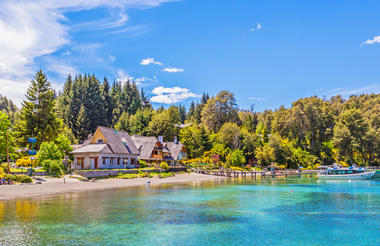Situated on Argentina’s stunning Rio de la Plata coast, Buenos Aires is a thriving portside capital defined by a rich history, vibrant culture, and strong European influence - thus nicknamed the Paris of South America. Countless museums covering a cornucopia of subjects; an active theatre culture; carnivorous buffets second to none; sensuous tango performances; a mosaic of architecture; and shops to fit all fancies – all these facets and more make up the seductive blend that is Buenos Aires. Some of the city’s highlights include the buzz of the La Bombonera Stadium; tango and milonga venues like the Bohemian La Catedral; and heritage architecture such as that at the Cementerio de la Recoleta, where visitors can wander through a ‘city’ of massive statues and marble mausoleums. Don’t miss the International Festival of Independent Cinema and the vibrant annual Pride Parade.
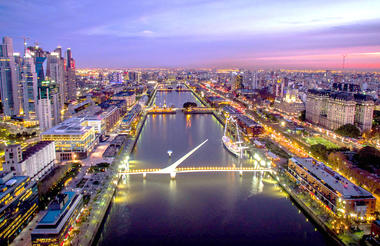
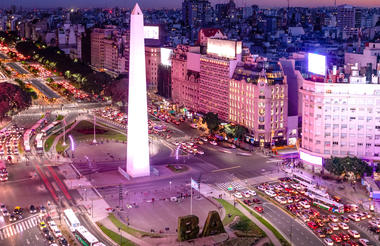
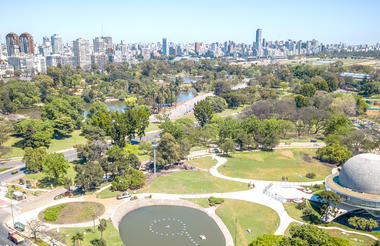
Stretching along the wide lip of the Nuevo Gulf, Argentina’s Puerto Madryn offers spectacular ocean views, a vibrant restaurant culture, and an array of outdoor sports. A variety of beaches to beckon to holidaymakers, including the town beach, lined by bars and often hosting concerts; the pristine El Doradillo where visitors can spot whales; and the quiet Playa Parana pebble beach. Seals, dolphins and whales flourish in the waters, and can be seen in a variety of ways: from the shore, as part of boat tours to islands, or up close as part of scuba-diving expeditions. The many adventure sports on offer here include kayaking, boating, diving, kiteboarding, windsurfing, water skiing, hiking, sandboarding and cycling.An abundance of superb restaurants serve traditional Argentine cuisine like steak or lamb, as well as fantastic seafood and Italian dishes.



A sweeping expanse of 360 000 hectares on the Atlantic Coast just off central Argentina, UNESCO-listed Peninsula Valdes is an arid and barren landscape connected to the mainland by the narrow isthmus of Carlos Ameghino. The terrain may be harsh, but its shores and protected ocean bays support a profusion of marine life, a key breeding site for the endangered southern right whale, as well as the southern elephant seal, southern sea lion and Magellan penguin. In addition to gulfs and rocky cliffs of up to 100 metres in height, there are shallow bays and shifting coastal lagoons with extensive mudflats, sandy and pebble beaches, and small islands.



Situated in Argentinian Patagonia, the region known as ‘Atlantic Patagonia’ is renowned for its breathtaking natural beauty. The remarkable landscape is characterised by magnificent fjords, glittering bays and secluded inlets meeting the lowlands of the Pampas. This spectacularly scenic area is home to the famed Valdes Peninsula, a UNESCO World Heritage Site known for its marine life, in particular for the orcas that beach themselves to hunt sea lions. This wild Patagonian coastal area offers visitors an abundance of wildlife viewing opportunities. Other popular activities include swimming at the pristine northern Las Grutas Beach and diving in the crystal-clear waters of Argentina’s diving capital, Puerto Madryn. Don’t miss the Cabo Dos Bahias Nature Reserve inhabited by an enormous penguin colony and countless birds, sea lions, and walruses.



Widely regarded world’s southernmost city, Ushuaia is a strikingly beautiful destination on the southern coastline of Tierra del Fuego Island, backed by mountains and facing onto Beagle channel. The city’s elegant commercial centre offers a variety of cultural and entertainment activities, while its natural location means that adventure enthusiasts are spoilt for choice, with kayaking, skiing, hiking and sailing all on offer. For a more serene excursion, boat cruises are a popular way to view the glacier off Ushuaia’s coast.
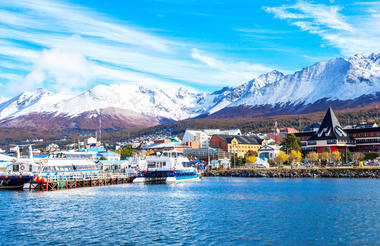
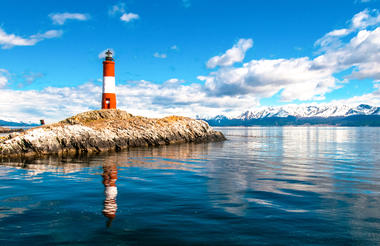

The world-famous Tierra del Fuego National Park is situated on the Argentine part of the island of Tierra del Fuego and was the first shoreline national park established in Argentina. The park is famous for its sublime views, fascinating history and unique environment. Featuring bright turquoise fjords, green forests close to the coast, and lush valleys created by parallel mountain ranges, the stunning scenery offers breathtaking views and extraordinary photographic opportunities, especially from the renowned lookout point at Lapataia Bay. History enthusiasts can see the ‘concheros’, circles where mollusks accumulated, showing that there were ancient yamanas aboriginal tribes living in the area hundreds of years ago (their main food was seafood). The remarkable Canadian Beavers can be seen from a distance along with their incredible dam systems, which have played a significant role in the environment.



Set at the southern tip of South America, Tierra del Fuego Province is a scenic province in the southernmost reaches of Argentina. Said to be one of the world’s final frontiers, this region boasts breathtaking scenery, incredible wildlife and rich cultural heritage. This corner of Patagonia provides endless activities and attractions for thrill-seekers and nature lovers. It boasts an array of natural wonders including ancient glaciers, untouched wilderness, national parks, pristine lakes, rivers and waterways. Don’t miss a visit to Ushuaia, the city set at the ‘end of the world’, which serves as the jumping-off point for expeditions to the Antarctic.



Situated deep in Patagonia’s snow-capped vistas, on the southern shore of Lake Argentino, El Calafate has become a key stopover for travellers headed to nearby Los Glaciares National Park. This icy wonderland is best known as the home of spectacular Perito Moreno glacier – a massive, shifting ice cap composed of dozens of smaller glaciers. Take a glacier tour, a helicopter ride, or a 4x4 excursion; hike and boat to your heart’s content; or visit one of the traditional ‘ranchos’ (estancias) to learn more about local culture (another great spot for this is the Centro de Interpretacíon Historico). A wonderful selection of restaurants and boutiques adds appeal; make sure to try the ‘alfajores’ cookies. Drink vodka, watch a movie, and learn all about ice at the impressive Glaciarium.



Situated in the Austral Andes in the Santa Cruz Province of southwest Argentina, the Los Glaciares National Park is known for its magnificent natural beauty. Glacial lakes, towering mountains and majestic glaciers merge to create an awe-inspiring spectacle of nature. It is the largest national park in the country, stretching over 7000 square kilometres. This UNESCO World Heritage site features a sprawling collection of spectacularly beautiful glaciers. Perito Moreno, one of the most famous glaciers because of its dynamic changes, can be seen in the southern area of the park; whilst granite peaks and forests characterise the northern area of this world-renowned park. Visitors can explore the mountain village of El Chalten, soak up the dramatic views of the glaciers with their calving ice falls into Lake Argentino, and discover the various types of Andean-Patagonian Forest, Patagonian Steppe and unique high-altitude vegetation blanketing the landscape.



Known for its spectacular beauty, Torres Del Paine National Park is a rich biosphere reserve in Chile’s Patagonian region. The park stretches over 242 000 hectares of magnificent landscape, featuring snow-capped mountains, ancient glaciers, cascading waterfalls, golden grasslands and several lakes that attract a variety of water birds. Three iconic granite pillars of the Torres del Paine tower over the landscape of emerald forests and the impossibly blue lake. Travellers may be able to spot the endemic guanaco llama, Andean condor, foxes, cougars, guanacos, Chilean Huemul, and around 15 birds of prey. Neighbouring Bernardo O'Higgins National Park to the west and the Los Glaciares National Park to the north, Torres Del Paine is the perfect place for extended trips in the Chilean wild.
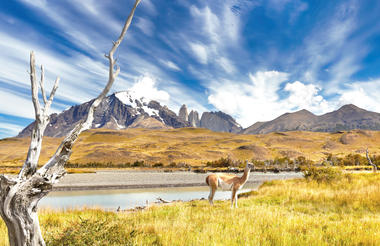
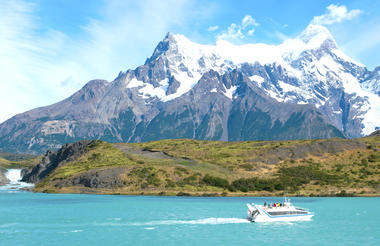
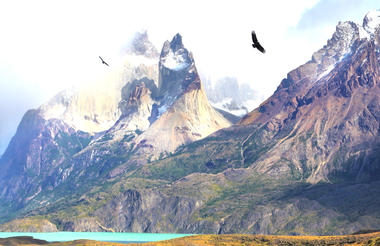
Idyllically situated in the Los Glaciares National Park in Argentina’s Santa Cruz province, the village of El Chaltén is known as Argentina's trekking capital. It is a popular haven for outdoor enthusiasts with hiking opportunities abound for both advanced and beginner trekkers. Just an hour’s walk can lead you straight to the treasures of Los Glaciares National Park, which range from great glaciers to towering rocky summits and rolling forests. Founded in 1985, the town got its name from the Tehuelche word meaning ‘mountain that smokes’, because of the clouds that persistently sit atop the great peaks. The Perito Moreno Glacier and the Laguna de Los Tres, a picture-postcard mountain lake with the snowy backdrop of Fitz Roy peak, are the most visited sites.



The Argentinian Lake District’s most popular destination, San Carlos de Bariloche, commonly called Bariloche, is a city for all seasons. It features a setting second to none – stretching along a glacial lake shoreline, surrounded by a national park in Argentina’s pristine Patagonia region. The region offers myriad activities and leisure opportunities: whether you want to go skiing, hiking, fly-fishing, or simply kick back and indulge in an epicurean feast, it’s all there for the taking. The city's numerous cafés and chocolate shops are a delight to explore by day; while after sunset, the city lights up with bars and nightclubs, where locals and visitors can dance the night away. Don't miss the opportunity to view the unique Swiss alpine-style architecture and discover the spectacular surrounding Andes Mountains.



Argentina's Lake District is a wilderness wonderland of pristine glacial lakes, cascading waterfalls, snow-capped mountains and forested valleys where condors fly overhead. A playground for nature lovers and adventure seekers alike, travellers to this spectacular setting can go trekking, fishing or skiing, or simply relax and soak up the scenery. While nature is the prime attraction here, the region encompasses several charming towns that act as gateways for exploring the surroundings. Arguably the most enticing of all these is beautiful Bariloche - set on Lake Nahuel Huapi's banks against rugged, snowy peaks that have earned it the nickname 'Argentina's Switzerland'. Another lovely stop is San Martín de los Andes, on Lake Lácar beneath the Mount Lanín volcano. This beguiling village has a shabby-chic charm - its slightly dilapidated buildings interspersed with rambling rose bushes and spiky 'monkey puzzle' trees.


